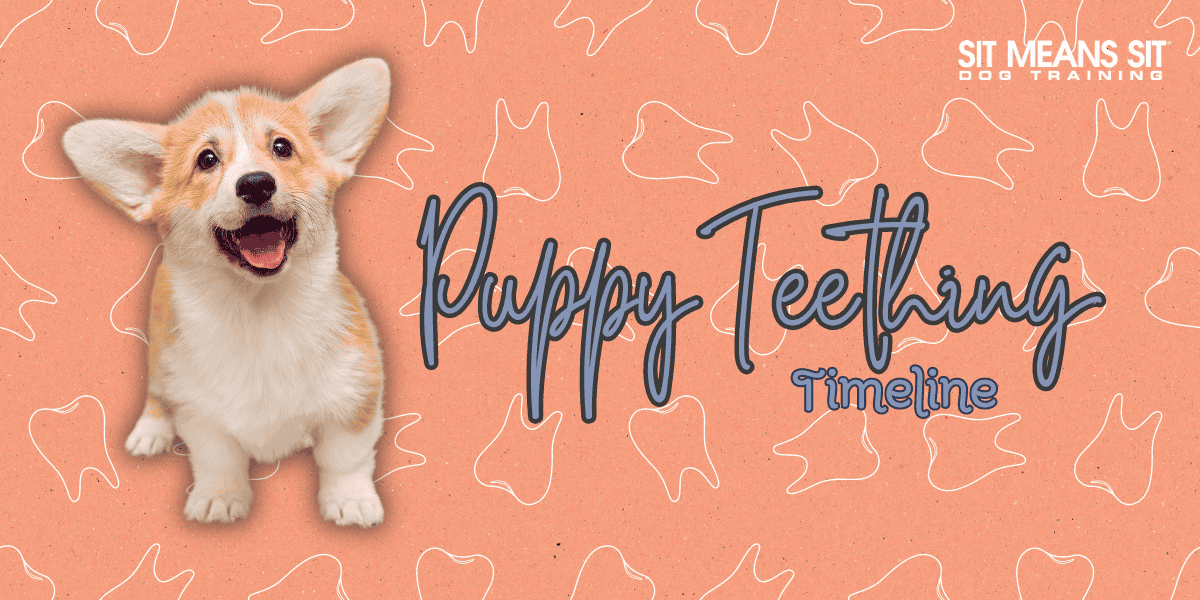Welcoming a new puppy into your family can be an exciting yet stressful time. There are many things to consider when bringing your pup home, but one of the most significant milestones your pup will go through is teething! Teething looks different for every breed and every individual dog. Fortunately, there are universal points throughout the teething process that you can expect any dog to endure. Let’s take a look at a quick teething timeline to ensure an easy tooth transition!
Signs of Puppy Teething
- Excessive chewing
- Extra drool or slobber
- Picky eating
- Small rice-shaped teeth scattered around
- Red or swollen gums
Birth-4 Weeks Old
Your dog is likely not with you during this period of their life; however, it is important to understand how their dental health changes during this first month. Expect your pup to be fed by their mother and start the earliest stages of teething.
Sometime within the first month of life, your canine’s eyes will open, and their teeth will peep through their gums. Congratulations! This is an exciting and pivotal part of your puppy’s growth. Now strap in because the fun has only just begun.
5-6 Weeks Old
At this point, you can expect all of your pup’s baby teeth to have come through — around 28 baby teeth! They have also likely moved on from being fed by their mother and have substituted with soft or wet dog foods. These foods are gentle on baby teeth and help dogs transition to adult food later.

7-16 Weeks Old
You’ll probably meet your furry friend and take them home between the 8th and 10th weeks! This is also the perfect time to be on the lookout for baby teeth around the house. These tiny, rice-shaped teeth will begin to fall out and can cause your puppy a lot of pain. Offer plenty of chew toys or even ice treats to help numb the gums.
This is a great time to socialize or even train your dog as they get used to their new lifestyle and environment. They’ll be more inclined to chew, so train your pup on what is okay to chew and what is off-limits. Let your furball get comfortable with you touching the other mouth. This will teach them not to bite, which is incredibly important due to their razor-sharp baby teeth.
6 Months and Onward
After six months, your dog should be entirely done with teething, and their adult teeth should have grown in. You can expect 42 adult teeth, a significant contrast from the original 28 baby teeth.
If you notice that your dog still has a few baby teeth once their adult teeth have grown in, consider contacting your veterinarian about the next steps you should take. Too many teeth in the mouth could cause discomfort or mouth pain.

Furthermore, dental hygiene is just as crucial for our dogs as it is for us. Keeping their teeth in good shape affects more than just their quality of breath. Start by gently brushing their teeth with your finger or a dog-safe gauze. Once your pup is comfortable with finger brushing their teeth, you can move on to a toothbrush and toothpaste made for canines.
In addition to basic hygiene, plenty of treats are made to offer dental care and a tasty reward for good behavior!
You did it! You and your puppy have made it through a whole set of chompers, and now you get to enjoy brand-new pearly whites! If your dog continues to struggle with chewing after teething is complete, no worries! We are happy to meet your new friends and get them properly trained to minimize chewing destruction!

